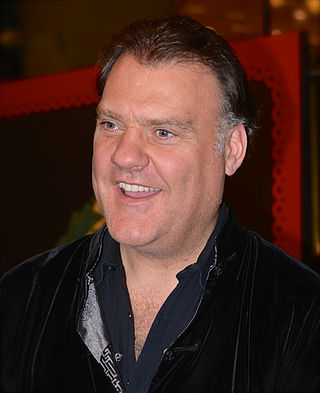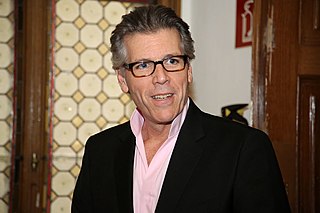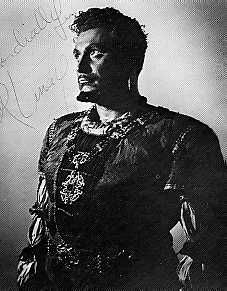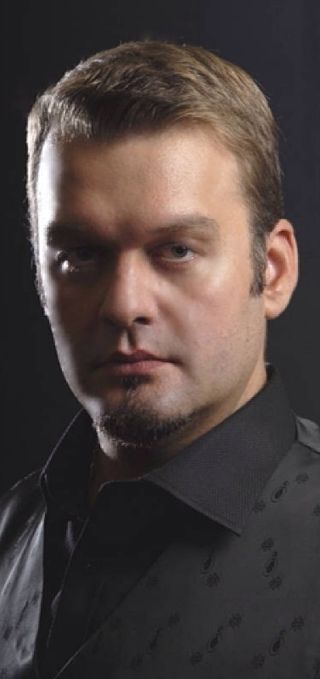Life and career
Born in Gorseinon, Wales, he studied at the RMCM, where he sang Leporello in concert, and Hunding, Fasolt, and Pogner in staged performances.
He joined the Sadler's Wells Theatre in 1968, and the Royal Opera House in 1970. He was also a regular guest at the English National Opera and the Welsh National Opera. His roles have included most of the major bass roles of the Verdi and Wagner repertories, such as: Miller, Sparafucile, Ferrando, Padre Guardiano, Phillip II, Landgrave, Hans Sachs, Gurnemanz, etc. He continued into his seventies to sing small roles on stage: Simone in Gianni Schicchi at the Royal Opera House in 2009 and 2016, Titurel from Parsifal at the Royal Opera House in 2007 under Bernard Haitink, and Schigolch in Lulu at the Metropolitan Opera in 2010.
Howell took part in the premieres of two of Peter Maxwell Davies's works, Taverner and The Doctor of Myddfai . He can be heard in studio recordings, as Jero in L'assedio di Corinto, Count Walter in Luisa Miller, and as Capulet in a live recording of I Capuleti e i Montecchi , opposite Agnes Baltsa and Edita Gruberova, under Riccardo Muti, at Covent Garden, in 1984.
A baritone is a type of classical male singing voice whose vocal range lies between the bass and the tenor voice-types. It is the most common male voice. The term originates from the Greek βαρύτονος (barýtonos), meaning "heavy sounding". Composers typically write music for this voice in the range from the second F below middle C to the F above middle C (i.e. F2–F4) in choral music, and from the second G below middle C to the G above middle C (G2 to G4) in operatic music, but the range can extend at either end. Subtypes of baritone include the baryton-Martin baritone (light baritone), lyric baritone, Kavalierbariton, Verdi baritone, dramatic baritone, baryton-noble baritone, and the bass-baritone.
Welsh National Opera (WNO) is an opera company based in Cardiff, Wales. WNO gave its first performances in 1946. The company began as a mainly amateur body and transformed into an all-professional ensemble by 1973. In its early days, the company gave a single week's annual season in Cardiff, gradually extending its schedule to become an all-year-round operation, with its own salaried chorus and orchestra. It has been described by The New York Times as "one of the finest operatic ensembles in Europe".

Sir Bryn Terfel Jones,, is a Welsh bass-baritone opera and concert singer. Terfel was initially primarily associated with the roles of Mozart, particularly Figaro, Leporello and Don Giovanni, and has subsequently shifted his attention to heavier roles, especially those by Puccini and Wagner.

Sir Geraint Llewellyn Evans CBE was a Welsh bass-baritone noted for operatic roles including Figaro in Le nozze di Figaro, Papageno in Die Zauberflöte, and the title role in Wozzeck. Evans was especially acclaimed for his performances in the title role of Verdi's Falstaff. He sang more than 70 different roles in a career that lasted from his first appearance at Covent Garden in 1948 to his farewell there in 1984.

Thomas Walter Hampson is an American lyric baritone, a classical singer who has appeared world-wide in major opera houses and concert halls and made over 170 musical recordings.

Jonathan Stewart Vickers,, known professionally as Jon Vickers, was a Canadian heldentenor.

Ramón Vinay was a famous Chilean operatic tenor with a powerful, dramatic voice. He is probably best remembered for his appearances in the title role of Giuseppe Verdi's tragic opera Otello.
Norman Stanley Bailey was a British operatic bass-baritone who appeared in leading roles in major opera venues. After an early career in Austria and Germany, he settled in England and was associated with the English National Opera. One of his signature roles was Hans Sachs in Wagner's Die Meistersinger von Nürnberg, which he performed at La Scala in Milan in 1968 and at the Bayreuth Festival the following year. Later that year he was called upon at the last minute to play the part at the Royal Opera House in London when Hubert Hoffman had to pull out with a sore throat. He also played this part in his debut at the Metropolitan Opera in New York City in 1976.

Lamberto Gardelli was a Swedish conductor of Italian birth, particularly associated with the Italian opera repertory, especially the works of Giuseppe Verdi.

Alexander Kipnis was a Russian-born operatic bass. Having initially established his artistic reputation in Europe, Kipnis became an American citizen in 1931, following his marriage to an American. He appeared often at the Chicago Opera before making his belated début at the Metropolitan Opera in New York City in 1940.

Walter Widdop was a British operatic tenor who is best remembered for his Wagnerian performances. His repertoire also encompassed works by Verdi, Leoncavallo, Handel and Bach.
Karl Ridderbusch was a German operatic bass, associated in particular with the music of Wagner. He was recognised as a notable exponent of the role of Hans Sachs.

Bernd Weikl is an Austrian operatic baritone, particularly known for his performances in the stage works by Richard Wagner. He also has written books and directed operas.
Richard Van Allan CBE was a versatile British operatic bass singer who had a lengthy career.

Rita Orlandi-Malaspina was an Italian operatic soprano who had a major international career from the 1960s through the 1980s. She drew particular acclaim for her portrayals of Verdi heroines. She also had a successful career as a concert soprano, particularly in performance of Verdi's Requiem and Ludwig van Beethoven's Symphony No. 9.
Stephen Milling is a Danish operatic bass who has had an active international career since the mid-1990s. Although his repertoire encompasses a wide range, he is particularly known for his roles in the operas of Richard Wagner.

Sorin Coliban is a Romanian opera singer with an international career. His voice range is bass–baritone. He is known for the volume and projection of his voice, both of which help him to sing both bass and baritone roles. He is one of the few singers to have performed with two different voices in the same performance: bass-baritone and countertenor.

Ryland Davies was a Welsh operatic tenor who appeared internationally at leading opera houses and festivals. He focused on Mozart roles such as Belmonte in Die Entführung aus dem Serail, Ferrando in Così fan tutte and Tamino in Die Zauberflöte. He performed as Ferrando first with the Scottish Opera, then at the Glyndebourne Festival, and for his debuts at both the San Francisco Opera in 1970, and the Metropolitan Opera in 1975. His lyric tenor was also well suited to roles such as Rossini's Almaviva, Donizetti's Ernesto, Verdi's Fenton and Britten's Lysander. He later turned successfully to character roles, and performed at the Royal Opera House in London until 2015. He made many recordings, including videos of performances in Glyndebourne and at the Salzburg Festival. Parallel to his singing career, Davies was a voice teacher, from 1987 at the Royal Northern College of Music, also at the Royal College of Music, the Royal Academy of Music, and the Reina Sofía School of Music in Madrid.
Alastair Miles is a British operatic and concert bass who has had an international career since the late 1980s.
Hervey Alan was an English operatic bass and voice teacher. During his career he sang leading roles with most of Great Britain's major opera institutions, including the Edinburgh Festival, the Glyndebourne Festival, the Royal Opera House, the Sadler's Wells Opera, and the Welsh National Opera. He is best known for creating the role of Mr. Redburn in the world premiere of Benjamin Britten's Billy Budd at the Royal Opera House, London, on 1 December 1951. Music critic Elizabeth Forbes wrote that his voice was "dark toned, resonant", and "especially effective as Zaccaria in Nabucco.











